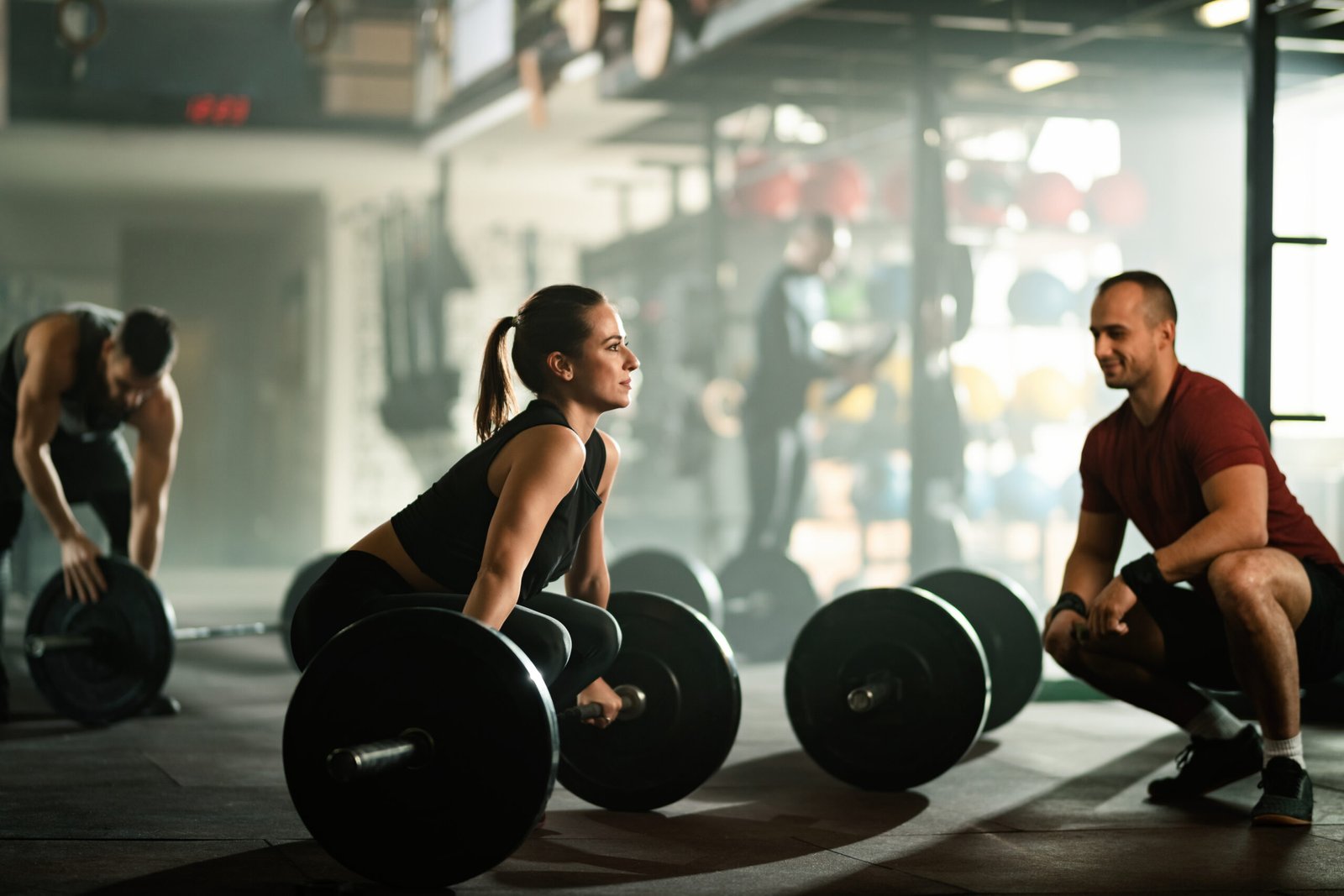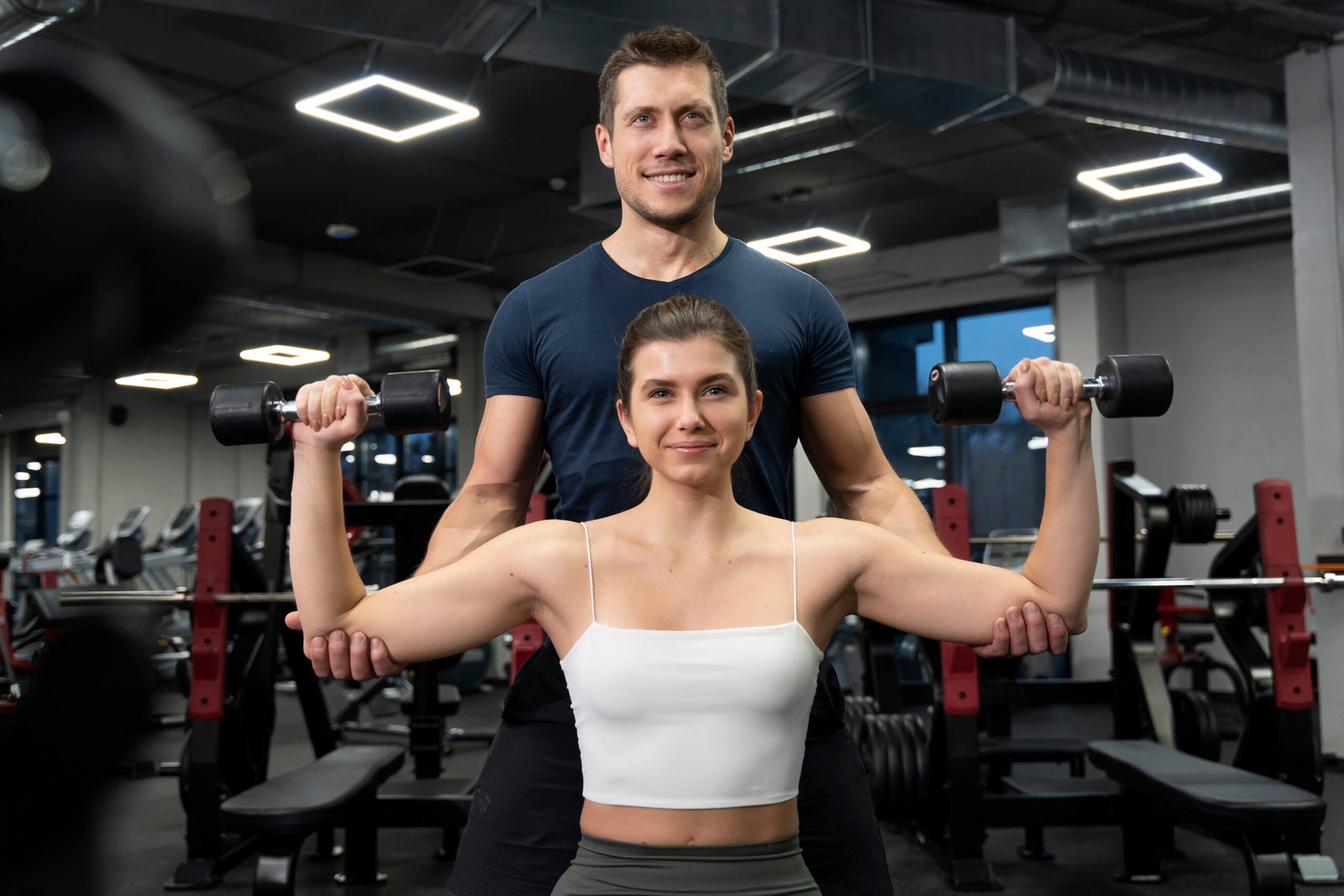The distinctions in programming and approaches may no longer be as significant as you believe.
Men And Women Both Need: Intense Weight Training
The trainer in me believes it is critical for all of us—men and women—to exercise all of our muscles. However, the realist in me notes that the two genders prefer to concentrate their aesthetics-focused exercise in distinct places. Many guys work on their chests, arms, and shoulders, whereas many women concentrate on their legs and shoulders.
However, there is a distinction. Most of the males I see are willing to workout in order to build muscle mass, while many women are afraid of becoming “bulky.” This is ridiculous, given that women have around 100 times less testosterone than men. So please allow me to speak with women for a bit.

When you talk about “toning,” “enhancing,” or “shaping” specific portions of your body, you are actually referring to muscle. Muscle determines the contour of your body, thus more muscle equals higher muscular tone. Muscle is required to build anything perkier, rounder, or sexier.
To build muscle, you must stimulate muscle tissue, and that tiny pink dumbbell is simply not up to the task. Instead, women frequently benefit from the heavy lifting that they are more accustomed to seeing males do, according to Dr. Cassandra Forsythe, co-author of “The New Rules of Lifting for Women.”
“In terms of lifting, [women’s] rep range is often in the 8-15 range,” explains Dr. Forsythe. “However, many women would actually benefit from lower reps and more weight to hit muscle fibers that are only stimulated with those types of lifts.”
Need more incentive to lift large objects? Muscle is a metabolically active tissue, which burns fat. Simply put, more muscle leads to a higher metabolism!
Women Need Less: Direct Quad Work
Everyone Needs: More Backside
Women are more likely to be quadriceps dominant than men. This is not a terrible thing; it is simply a question of anatomy. From a programming standpoint, however, it means that unless she is training for a physique contest or a sport that requires extremely strong quads, the normal woman probably does not need to practice isolated quad-focused exercises such as leg extensions on a regular basis.
What is the alternative? Limit your quad workouts to complex movements like squats and lunges. If you’re going to focus more on one section of the leg, make sure to strengthen the hamstrings as well to balance out the quad strength. Hamstring curls, good mornings, and deadlifts are excellent exercises for ladies.
This also applies to guys. Don’t forget about those glutes—they’re one of the most obvious indicators of a strong athlete. In reality, most guys could benefit from more focused lower-body strength training. Don’t be that guy at the beach wearing jeans to hide his chicken legs.
Women Need More, Men Need Less: Upper-Body Work
Ladies: If you’re seeking for a way to channel the energy you used to expend on the leg extension machine, Dr. Forsythe has an idea: start pushing and pulling.
“It’s well known that most women carry much less lean mass in their upper bodies compared to men, so exercises such as push-ups and pull-ups are a common weakness,” she explains. “It may be argued that women should devote more time to these exercises than males in order to enhance upper-body strength, which leads to higher self-esteem and a more attractive upper body. What female doesn’t feel great after doing full push-ups or pull-ups on her own?”
Men, on the other hand, are infamous for focusing solely on the areas of their bodies visible in the mirror and neglecting everything else.
Building up your chest and biceps is excellent, but strengthening your mid-back muscles will provide you better muscular balance, healthier shoulders, better posture, and a thicker, stronger physical appearance in general.
Men Need More, Women Need Less: Rest
You’ve likely heard that men have “more muscle mass” or “are stronger” than women. This has a solid scientific basis, but most people misuse the concept to make themselves look foolish (in the case of men) or as an excuse (in the case of women). However, there is a method to put this information to our mutual advantage.
“Women do tend to be less powerful than men due to several factors, such as lower muscle mass, lower lung capacity, and smaller hearts,” According to Dr. Forsythe. “However, their ability to recover from high-intensity activity is frequently better than men’s. This means that women will often require less rest time following an exercise bout or set, allowing them to return to the barbell or circuit sooner. So, training routines that need extensive rest intervals may bore a woman.
This does not imply that women should do more reps than males, but simply that they can typically endure more exercises in a given workout. A typical guy could benefit from longer, slower workouts in which he puts all of his effort into a single set and then rests, or by supersetting two strength exercises and then resting. His partner, on the other hand, might benefit more from practicing sets of mini-circuits with 3-5 strength exercises.
Of course, this is not true for every man or woman, but it is something to consider while planning your workout. Although men and women can and frequently do practice the same exercises, how we structure those activities has a significant impact on how much we enjoy our time at the gym. This can mean the difference between fitness success and failure, as it is well known that we are more likely to persist with something we enjoy.
Men Need More, Women Need Less: Yoga
There are many men who practice yoga, but let us not fool ourselves into thinking it’s anything close to a level playing field. This is unfortunate because yoga has numerous advantages that most guys may benefit from. For starters, it has the potential to improve joint range of motion in ways that heavy weight training cannot. It’s fantastic to be bigger and stronger, but it’s even better to be larger, stronger, and mobile. Plus, yoga is an excellent way to recover from strenuous strength workouts.
So, why am I advocating that women should do less yoga? I am not. I would simply urge them not to overlook strength training because the strength benefits of yoga are minimal when compared to free weights, cables, and machines. You can undoubtedly get stronger with yoga, but after you get past the beginner level, the muscular challenge comes from more difficult poses, which tend to push your mobility rather than overload any specific muscle groups. Furthermore, the sluggish pace of yoga can be balanced by doing shorter, more intensive strength-training sessions. There is no reason not to do both.
Also, consider why you do yoga. Many women have believed that yoga will result in “longer, leaner muscles.” Just to be clear, this is impossible. Here’s why.
All muscular tissue is lean. There is no such thing as “fat” muscle. And, no, muscle does not convert to fat or vice versa. Fat is fat; muscle is muscle. Your healthy diet and exercise habits determine whether you gain or lose weight.
Muscles are related to bones, thus lengthening your muscles requires lengthening your bones as well. Your muscles can shrink, expand, or remain the same size, but they cannot become longer.
Men And Women Both Need Less: Gender-Specific Exercises
If you conduct a fast internet search for body-part specific workouts for the glutes, arms, chest, and shoulders, you’ll notice that many of those terms are frequently followed by “for women” or “for men.” This is not an accident. After all, many people use those words in their searches.
However, there are no workouts specifically designed for males or women. There are only exercises. We are different sexes, but our bones, connective tissues, nerves, and muscle fibers are all comprised of the same raw material and work similarly. A conventional deadlift and a laying leg curl are not intrinsically male or female exercises. They’re both great hamstring workouts, and each has a specific purpose based on your goals, not your gender.
Do not be terrified of any certain machine or movement. You have access to the entire gym, so learn how to make the most of it.


Add a Comment